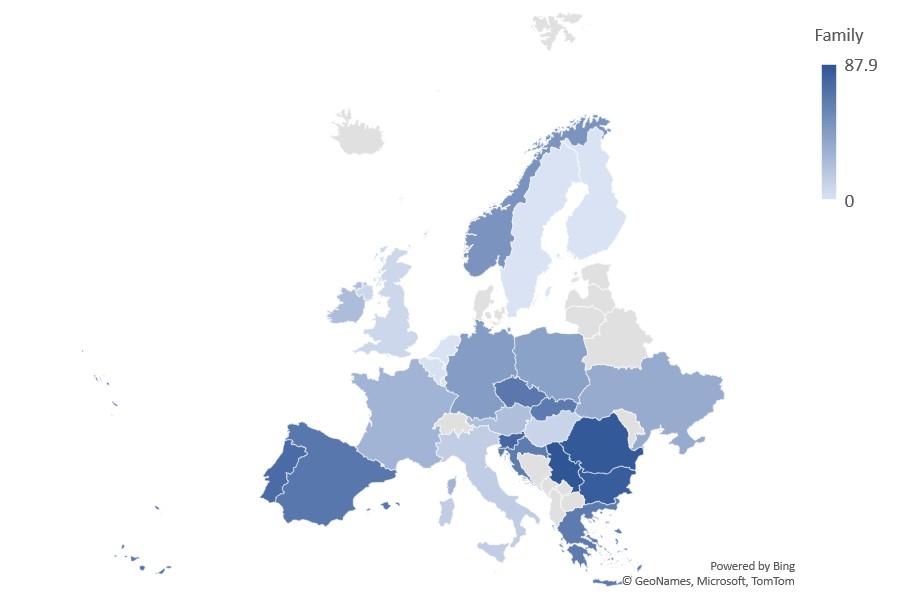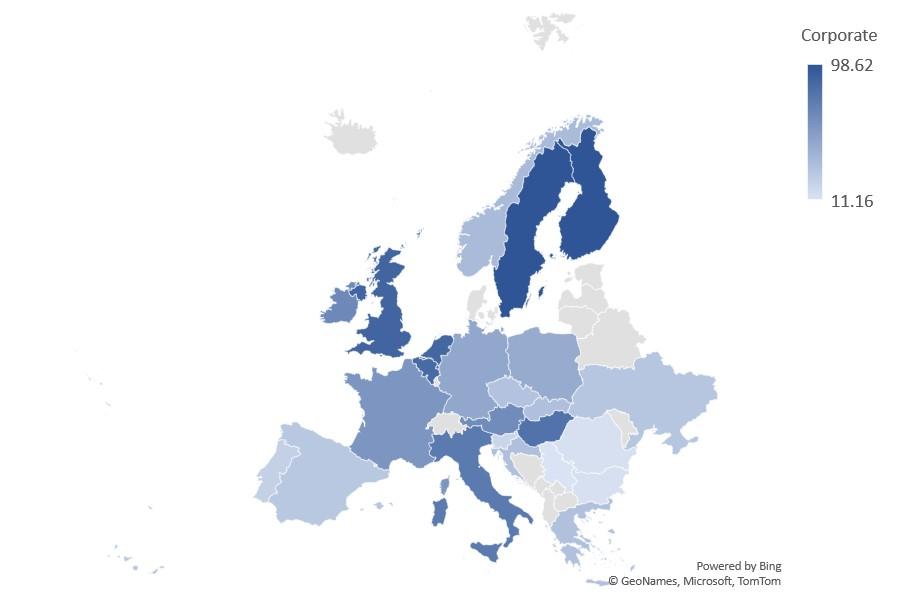Family business owners are often said to have a long-term orientation (Bertrand and Schoar 2006), excellent information about the firm (Demsetz and Lehn 1985), and a good understanding of the firm’s wealth-creating processes. However, there are also well-known outcomes of nepotism, altruism toward family, and promotion of incompetent family executives (Miller and Le Breton-Miller 2021). In contrast, corporate and institutional owners are well-diversified and characterised by the advantages of finance and low risk aversion.
While these characteristics of different owner types are well-documented in the literature, they are rarely analysed together, in a sample of comparable firms with majority ownership. In fact, institutional owners often control a relatively small proportion of the firm and often display a limited impact on company performance. Corporations often invest for strategic reasons that are well-documented in the literature, such as prospective mergers or branding (Hillier et al. 2011). Successful performance is therefore not necessarily indicated by immediate financial returns for corporate owners.
Finally, firms with state ownership are likely to exhibit non-profit-maximising behaviour (Estrin et al. 2009), but such companies may also have a relative advantage in terms of credit, liquidity and cost of capital (Musacchio et al. 2015).
In a sample of private European firms, covering 2001 to 2018, we analyse how investment decisions vary across ownership types (Estrin et al. 2022). Our focus on private firms yields several advantages, notably that private firms are less subject to the short-termist pressures that distort the investment decisions of public firms (Asker et al. 2015). Moreover, owners of private firms typically hold large stakes. Our focus on single owners holding a stake of at least 95% greatly reduces potential contamination of our analysis by agency problems, for example from the co-existence of different ownership types and different views on investment strategy.
Landscape of European ownership
The majority of firms in our sample of 242,536 private firms from 24 European countries are family-owned (49.97%), 41.8% of firms are owned by corporates, 5.7% by institutional investors and 2.24% by the relevant state. The remaining firms are controlled by active (0.04%), anonymous corporate (0.16%), and anonymous individual (0.09%) owners.
In nearly all countries, family firms and firms controlled by corporates are the most important categories. The exceptions are Belgium, Finland, Netherlands, and Sweden, where family firms with 95% control represent 1.05%, 0.20%, 0.00%, and 0.06% respectively. These countries instead display higher percentages of private firms controlled by corporates (85.78% in Belgium, 98.6% in Finland, 87.7% in the Netherlands, 98.4% in Sweden). The highest percentages of family firms are in Serbia (87.9%), Romania (85.7%), Bulgaria (83.03%), and Slovenia (77.07%). Figures 1 and 2 visualise the country distribution of sample firms with family and corporate ownership, respectively, using the map of Europe.
Figure 1 Country distribution of sample firms with family ownership
Figure 2 Country distribution of sample firms with corporate ownership
More than 10% of private firms are fully controlled by institutional investors in Austria, Belgium, France, Netherlands, and Norway (see Figure 3). At the same time, the state maintains considerable supermajority control in some former socialist economies like Ukraine (33.3%) and Poland (10.27%), while there are no firms fully controlled by the state in Finland and Sweden. Active and anonymous ownership categories are unimportant across all countries, representing less than 1.5% of firms in each country.
Figure 3 Country distribution of sample firms with institutional ownership
How do different owner types invest?
We investigate how ownership type affects firm investment levels and whether different types of owners have different sensitivities to business opportunities, profitability, cash flows, and value-added growth. We focus on four ownership types: family, corporate, institutional, and state. We overcome methodological shortcomings of previous studies and capture the effect of the change in the ownership type (‘transitory’ effect) as well as the effect of ownership type in firms with no change of ownership (‘permanent’ effect). We also address potential endogeneity by using matching samples and examining transitions from one owner type to another.
We find substantially higher sensitivity of the family-owned firms to investment opportunities, profitability, cash flows, and value-added growth compared to corporate and institutional owners. Our findings contradict the bulk of the existing literature, which usually argues that family-owned will be risk-averse because the owner’s wealth is often relatively undiversified and tied up in the business. Our findings support the view that family-owned firms take a long-term strategic perspective (Bertrand and Schoar 2006, Aguilera and Crespi-Cladera 2012), invest significantly more than, for example, institutional and corporate owners, and are more sensitive to external factors via cash flows. Our findings are likely to have arisen because our focus on supermajority owners allows us to disentangle agency effects from the impact of ownership.
Even so, the positive effects of family ownership on investment are found only to apply to tangible investments; when we consider investment in intangibles, the traditional findings in the literature are found to hold. We make this distinction between tangible and intangible investment because it is the latter that is usually linked to R&D and therefore to innovation and productivity growth (Corrado et al. 2013). This suggests that a more fine-grained analysis of the impact of family ownership might focus on R&D, innovation, and productivity.
Implications
Our analysis leads to several important lines of policy analysis. First, the negative view of family ownership in the growth literature may need to be revised or, at a minimum, become more nuanced. Our findings suggest that the problems with family ownership are concentrated on intangible investment and that policymakers may wish to encourage R&D and innovation through intangible assets in such firms.
Our results also bring into question the concerns about investment behaviour in state-owned firms often noted in the literature (Estrin et al. 2009). When the supermajority criterion of ownership is applied, state-owned firms consistently display higher sensitivity to profitability, cash flows, and business opportunities than even family-owned firms.
The study also opens several promising lines of future research, developing the use of the supermajority criterion to analyse the impact of different governance mechanisms. It would also be valuable to delve deeper into why family-owned firms invest less in intangible assets. One approach might be to consider the limitations that they face in terms of collateral when funding new investments because their assets are already tied up in the operation of the firm.
References
Aguilera, R V, and R Crespi-Cladera (2012), “Firm family firms: Current debates of corporate governance in family firms”, Journal of Family Business Strategy 3(2): 66–69.
Asker, J, J Farre-Mensa, and A Ljungqvist (2015), “Corporate investment and stock market listing: A puzzle?”, Review of Financial Studies 28(2): 342–90.
Bertrand, M, and A Schoar (2006), “The role of family in family firms”, Journal of Economic Perspectives 20(2): 73–96.
Corrado, C, J Haskel, C Jona-Lasinio, and M Iommi (2013), “Innovation and intangible investment in Europe, Japan, and the US”, Oxford Review of Economic Policy 29(2): 261–86.
Demsetz, H, and K Lehn (1985), “The structure of corporate ownership: Causes and consequences”, Journal of Political Economy 93(6): 1155–77.
Estrin, S, J Hanousek, and A Shamshur (2022), “Owner type and investment of private firms”, CEPR Discussion Paper 17774.
Estrin, S, J Hanousek, E Kocenda, and J Svejnar (2009), “The effects of privatization and ownership in transition economies”, Journal of Economic Literature 47(3): 699–728.
Hillier, D, M Grinblatt, and S Titman (2011), Financial markets and corporate strategy, 2nd European Edition, McGraw Hill.
Miller, D, and I Le Breton-Miller (2021), “Family firms: A breed of extremes?”, Entrepreneurship Theory and Practice 45(4): 663–81.
Musacchio, A, S G Lazzarini, and R V Aguilera (2015), “New varieties of state capitalism: Strategic and governance implications”, Academy of Management Perspectives 29(1): 115–31.








